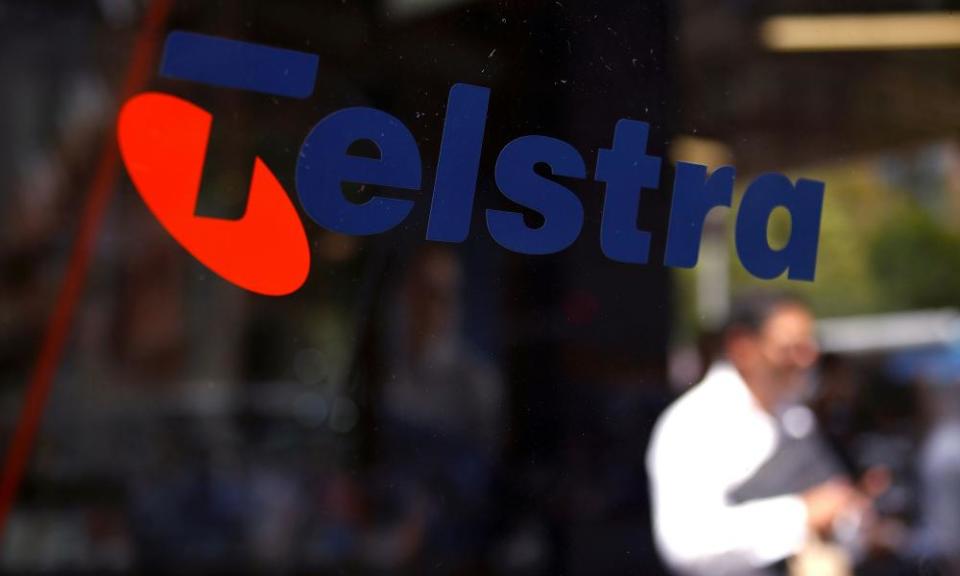Telstra says it’s too big to go ‘off grid’ to reach 100% renewable energy target

The Telstra CEO, Andy Penn, has said the company is too big to go “off-grid” in its pursuit of using 100% renewable energy, meaning it must invest in returning renewable energy to the grid to achieve its goal.
Australia’s largest telecommunications company has towers, exchanges, data centres and a network of 50,000km of fibre running across the country. It accounts for around 1% of all of Australia’s energy production and is the 14th biggest electricity user in Australia.
The company has been carbon neutral since last year, but is aiming to get to 100% renewable energy generation equivalent in 2025 – in part by funding renewable energy to be pumped back into the same grid Telstra uses to power its network across the country.
“At a practical level, we could not replicate the distribution infrastructure of the current energy infrastructure in Australia – that wouldn’t make sense,” Penn said. “It’s a lot more pragmatic for us to actually … play a role in raising the proportion of renewable energies going back into the grid in the first place. And then we all benefit.”
Related: Telstra stripped of reconciliation status over ‘unfair’ sales to Aboriginal people
On Friday, the company announced an agreement with Global Power Generation to secure power from the $120m, 58-megawatt Crookwell 3 windfarm in Goulburn, New South Wales, which is due to come online in 2023. In combination with other windfarm investments Telstra has made, Penn said the output would be more than half of what Telstra uses in Australia – the equivalent of the power used by more than 150,000 homes.
A Greenpeace report released on Friday ranked Telstra first in Australian telecommunications and IT companies in terms of its commitment to reaching 100% renewable energy, noting the company is also the highest energy user by far, with 1.4GWh per year. Greenpeace said Telstra’s target was a “significant commitment that will help reduce emissions”.
A challenge facing telecommunications companies in Australia is the constantly increasing demand on their networks as more and more data is consumed on phones, laptops, Smart TVs, and an increasing number of internet-connected devices in homes and offices. Penn said data volumes on Telstra’s mobile network are increasing 20% to 30% a year. The move to 5G for its mobile network is bringing some energy efficiencies, Penn said.
“If I can replace a 3G or 4G radio site with a 5G radio site, it will process more transmission and more data, more efficiently, which leads to a more efficient use of electricity, and then ultimately hopefully also a reduction [in energy use].”
Software-defined networking, where a telecommunications company can scale up capacity on the network as required through software, not through hardware – like radios and routers as has historically been the case – has meant Telstra can also be more efficient with power use as the network requires it, Penn said.
Related: Telstra phone records might reveal who decided to use security guards in Victoria's hotel quarantine
“We can actually manage the network traffic flows much more efficiently, and so, if we’ve seen demand increase over here, we can increase capacity over there, and then produce capacity over different parts far more dynamically than historically has been the case.”
As the prime minister, Scott Morrison, headed to the G7 reluctant to lock in specific targets to get to net zero by 2050, Penn would not be drawn on whether the government or other businesses should be stepping up their own targets.
“I’m the sort of person who likes to tell other people less about what they should be doing and focus more on what we should be doing,” he said. “I’d rather lead by example and take responsibility ourselves and encourage others to be more ambitious through being more ambitious ourselves, because I think ultimately like many things in life, climate change and reducing carbon emissions … we can’t put it all on one party.
“You can’t put it at the feet of government, you can’t put it all at the feet of individuals, you can’t put it all at the feet of companies. We’ve all got to play a role and Telstra is a very big organisation, so I think we can play a role.”

 Yahoo Finance
Yahoo Finance 